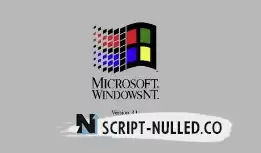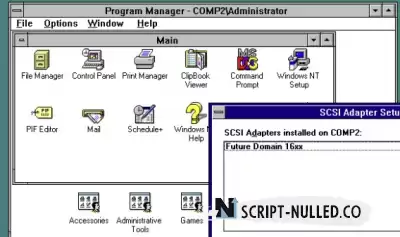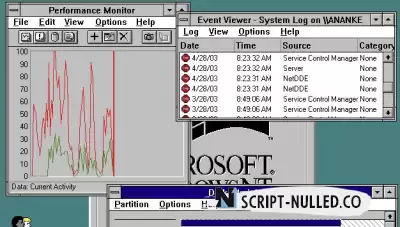Download Windows NT 3.1 ISO file (Workstation and Server)

Windows NT is the first in the line of NT-based operating systems, which means that Windows NT 3.1 is the operating system that provided Windows with the brand awareness needed to enter the market. There were many specifications that made the operating system unique in the market. To begin with, the operating system contained a server platform that was more technically advanced than its counterparts.
The operating system was based on DOS-based operating systems, which made them even more adaptable when connected to a network. The biggest highlight of Windows NT or the new technology version 3.1 was that it was available for both workstations and server operating systems, which greatly benefited Microsoft in terms of market share, as well as gave a boost to their Windows-branded products. There are also various options, such as the 16-bit architecture, that have made the operating system more compact.
Review
Windows NT 3.1 was loaded with features that set the operating system apart from the general class in terms of performance and economy. In Windows 3.1, everything could be processed and stored much faster, and additional features appeared that made the system much more adaptable to a network connection.
There are also features such as the entire programming core, which was created exclusively in C, which made the system much more adaptable to any environment. The virtual memory management tool for data storage has also helped make the operating system much more adaptable in terms of storage.
Well, these are just some of the ones that were available with the system, but let's discuss the various features that were also available in two versions of Windows NT 3.1, the workstation and the server version.
1. Inclusion of C/C++ programming in the software framework
The programming world was at its peak, and Microsoft made great strides by releasing Windows NT 3.1 for a C programming workstation and a server operating system in the C++ programming language to provide a connectivity advantage. This kind of software platform also had another advantage: The system ensured that they could be easily rooted, and gave an advantage when testing with various software versions of Windows NT 3.1, which significantly increased the number of users using the operating system.
These capabilities have greatly expanded the development capabilities of an operating system with more features in the next generations of operating systems, starting with Windows.
2. Virtual Memory Management Tool
The virtual memory management tool mimicked the performance of antivirus software in those days. VMM will carefully examine all software running on Windows NT 3.1 and make sure that it removes any potential malware that could damage the system, as well as significantly increase the security of files and folders that can be accessed using login credentials.
This factor significantly increased the system performance, and also became one of the factors for the successful release of the server version. The added security features were by far the best during the release of Windows NT 3.1.
3. DOS Virtual Machine (VDM)
The DOS virtual machine is one of the features that has made the operating system efficient in terms of data processing, as it has reduced the load on the main operating system. There was a common misconception that VDM was seen as a virtual machine released with the Windows NT 3.1 operating system, but in fact it was a 32-bit operating system that was designed to run DOS-based applications, and Windows ran other non-DOS-based software with it. there were many suggestions that this would slow down the system as a whole, but with the release of the Windows operating system, these assumptions were dashed to dust.
4. NT Bootloader
The NT Bootloader for Windows NT 3.1 was a special bootable software that included multi-boot options, which gave the system an additional advantage when switching between Windows NT as well as MS-DOS. This bootable software also had a beneficial effect on the speed of the operating system and saved time spent on booting the system. NTLDR also had a powerful software platform built in, which was not used in RISC computers because they had their own download manager.
System requirements
The system requirements for the workstation and the server version of the operating system were almost the same in terms of performance.
RAM requirements
Workstation: 12 MB of RAM
Server: 16 MB of RAM
Hard disk space
Workstation: 75 MB hard drive
Server: 90 MB hard drive
MS-DOS 3.1
Video cards support VGA.
Download the Windows NT 3.1 ISO file for the workstation and server
Files for downloading both the workstation and the server operating system are available via separate download paths listed below. Before booting the system, make sure that the initial system requirements are met. The best way to download is to connect to a reliable network.

 Spain
Spain
 Portugal
Portugal






